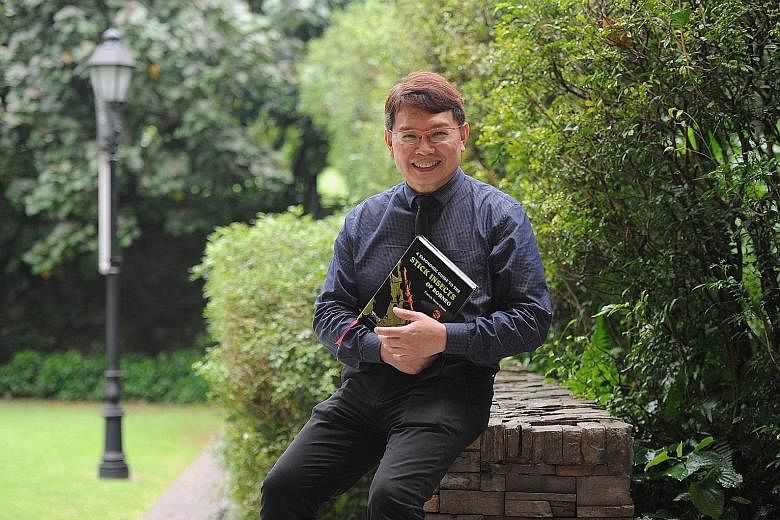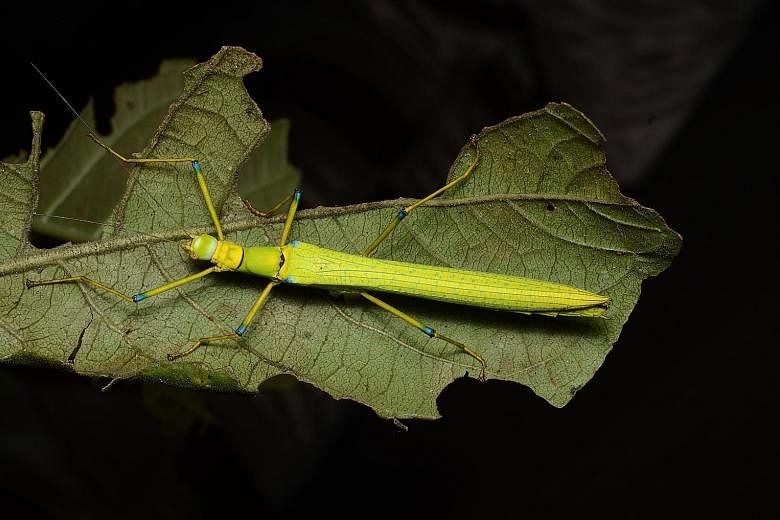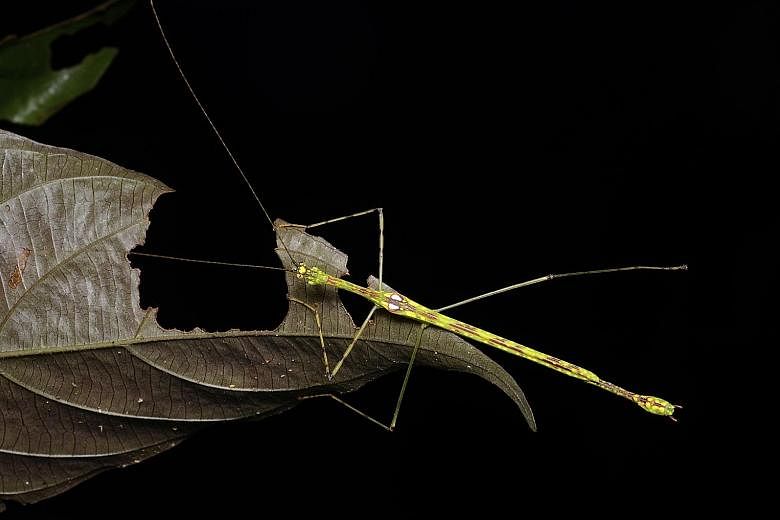A prominent colorectal surgeon in private practice, Dr Francis Seow-Choen knows all about bugs in the stomach and intestines.
When it comes to other insects, namely those of the stick and leaf variety, he is no less an expert.
In fact, the 59-year-old has just launched his fourth book on the subject, a 454-page tome fully illustrated in colour containing the fruit of more than 20 years of labour.
Called A Taxonomic Guide To The Stick Insects Of Borneo, the book documents the 52 species of stick and leaf insects that Dr Seow-Choen has discovered.
The honorary research affiliate with the Lee Kong Chian Natural History Museum called the book a "landmark".
"As my publisher said, it's a quantum leap in knowledge of these insects because finding one or two already makes people very excited. Here, we are describing 52 new species," he told The Straits Times.

For example, one insect he found is the Necroscia lehi from Gunong Mulu National Park, a relatively rare stick insect from Sarawak. It was named after Mr Charles Leh, curator of Natural History at Sarawak Museum, who has been supportive of his work.
Some of the 52 species that Dr Seow-Choen has found can be classified under 15 new genera and are included in the book, along with another 285 species.
"I really put a lot of effort in it, looking through museums, looking through specimens, going trekking, looking out for new things, so it's a cumulation of a lot of hard work and effort," he said.
The book is published by the Lee Kong Chian Natural History Museum and Natural History Publications Borneo, with the support of the National Parks Board (NParks).
It took three years to put the book together. It retails at $88 and can currently be bought only from Natural History Publications Borneo.
But Dr Seow-Choen said he is in talks with the Lee Kong Chian Natural History Museum, and NParks to carry it.
Datuk Chan Chew Lun, director of Natural History Publications Borneo, said the book was "a major advancement of knowledge".
One of the species found, a winged stick insect called the Calvisia (viridocalvisia) chani found around the Kinabalu Park Headquarters in Sabah, is in fact named after Mr Chan, who first photographed the species' adult and nymphs many years ago.
Referring to the 15 new genera found, Mr Chan said: "This is extremely unusual. This could have happened 200 years ago, a hundred years ago, but in today's environment, you don't have a taxonomic book describing so many at the same time."
Dr Seow-Choen has three other books on stick and leaf insects: a general guide and two other titles which he said are more or less based on the work of fellow insect researchers and other books.
While other people may see insects as pests, Dr Seow-Choen grew up with a love for them.
He used to catch insects in bushes and take them home, to his father's chagrin.
In the 1990s, when he was in his 30s, and already a colorectal surgeon, he sought to find out more about these bugs when he realised that little had been written about them.
A lot of people do not do research on stick insects "because it's quite difficult", he said.
For instance, he often has to spend the night trekking through the forest in search of his insect quarry, an endeavour that sometimes involves enduring leeches sticking onto him. He has also encountered poisonous snakes - but he is not afraid of them and likes to take photos of them instead as they are a part of nature.
He said: "When I go to the forest - and not many people like to go to the forest - often I am alone.
"I go to Sabah, I go to Sarawak. I start at seven in the evening. Oftentimes, I am out till five in the morning. I walk the whole night."
Once, he got lost and spent four hours wandering up and down a track that led to marshes at both ends.
"Lost in a forest in the middle of the night - not a good thing. I was walking along this track, and the track was full of ants, crawling and biting me. I looked around for a better place to walk, saw a broad track and climbed onto it."
He eventually found the right track and made his way out safely.
Dr Seow-Choen said what he is doing is similar to what taxonomists, or animal describers, do.
"We are classifying animals. We are giving them their place in the animal kingdom."
It is essential to keep discovering new life, he said.
"There are a lot of things out there. If you don't find them, they may not be around forever because forests are being cut at an alarming rate around the world, especially in South-east Asia."
He hopes more people will get in touch with nature.
"A lot of people say, 'Don't touch, don't rear, don't keep (animals), just watch National Geographic.'
"It's not good enough. You have to go out there. You have to touch things, learn about things, understand those things."



